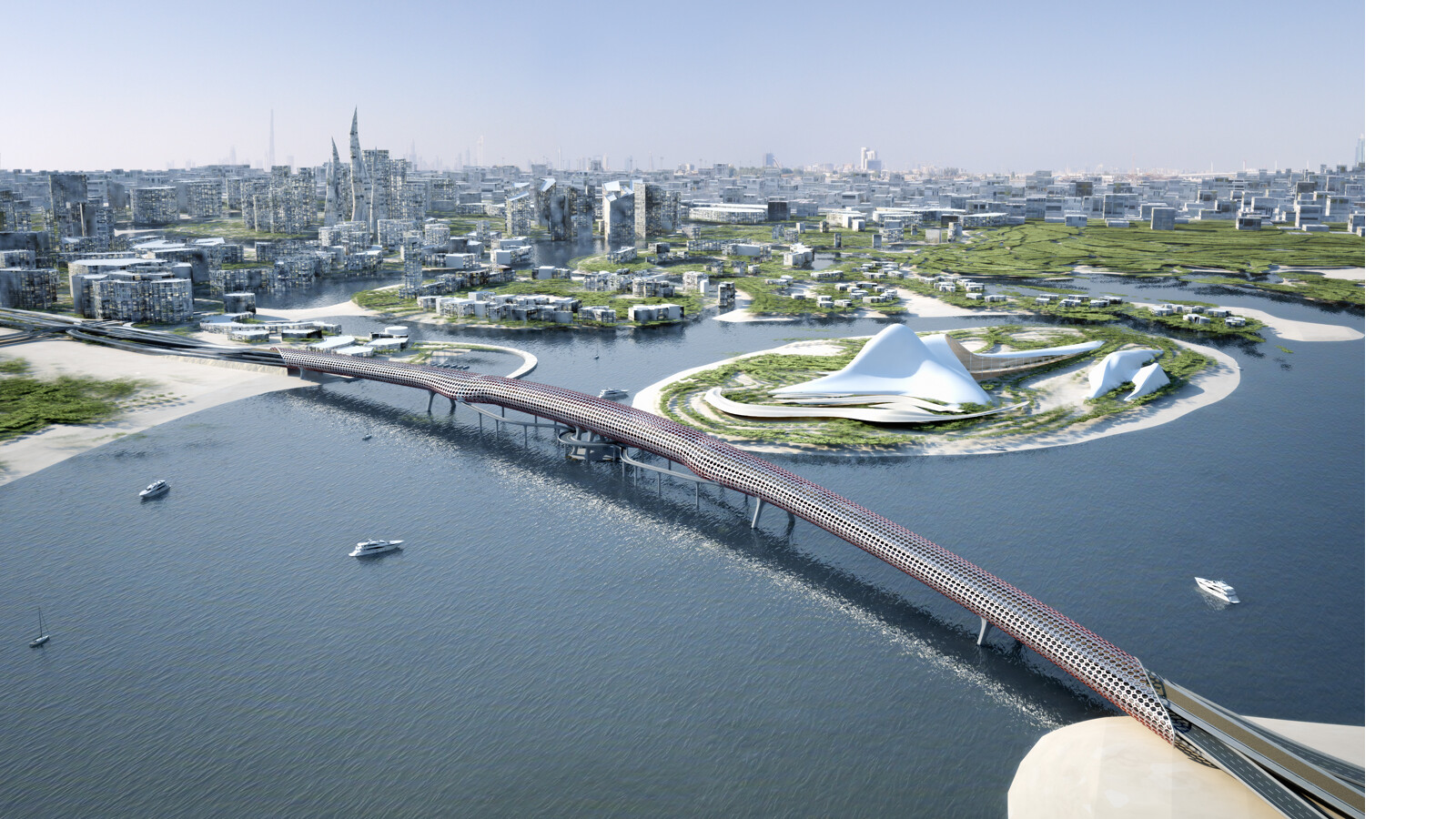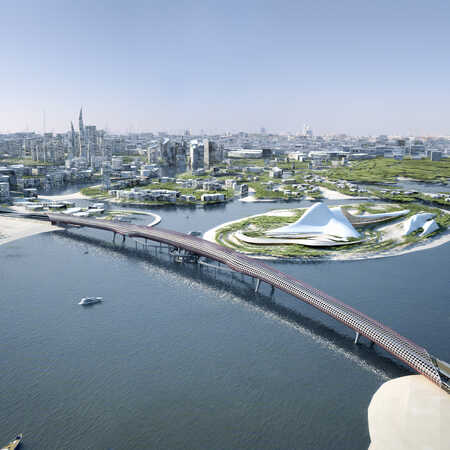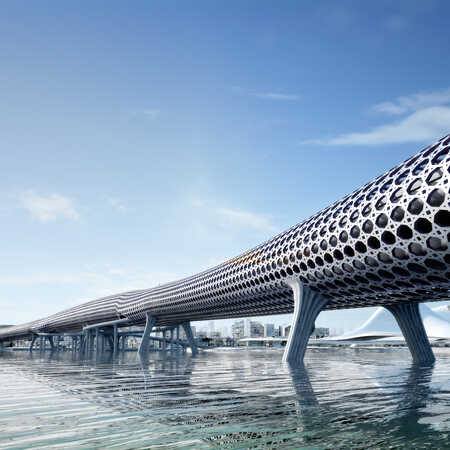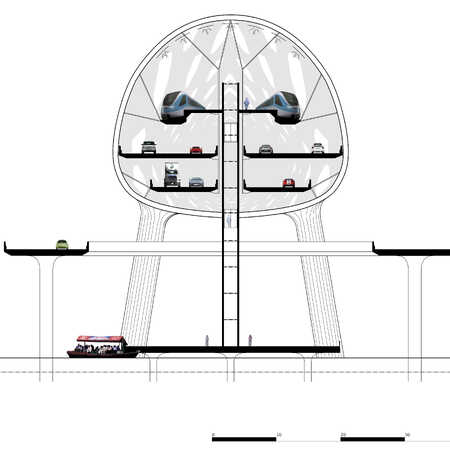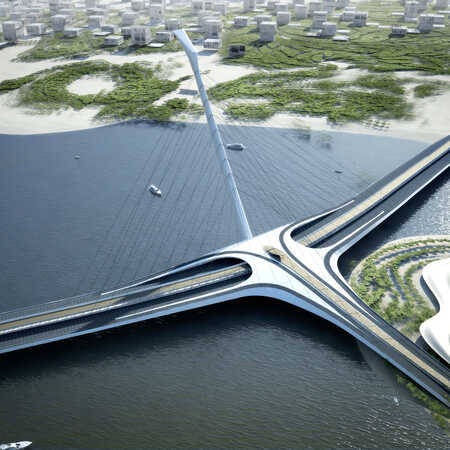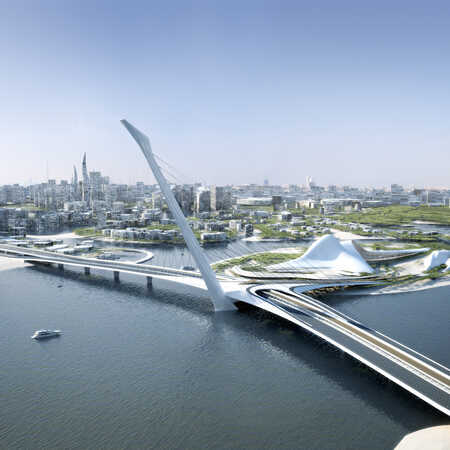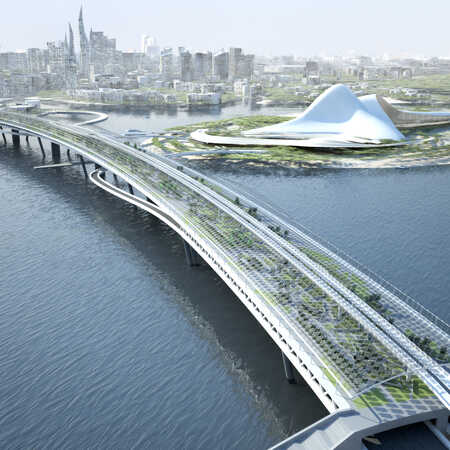0459
Gallery
A competition in Dubai
In 2005 the authorities in Dubai held a competition for a long bridge over The Creek. The location would be spectacular, next to a newly created island with an Opera House designed by Zara Hadid. The ZJA design team decided to enter the contest, and to leave its own comfort zone in making the design, in order to connect with Dubai’s sensational and extravagant architecture.
Three radically different bridges
It came to light that ideas for a maximalist bridge over The Creek were taking radically different directions, so the thought arose of entering three different designs.
The design for the sixth major bridge for cars, pedestrians and the metro, could be based on a grand gesture typical of Dubai, one in which a fantasy, an association or a symbol predominates. Functionality, sustainable technology, economic use of materials and sober styling were allowed to take second place on this occasion.
The Tube bridge
Moshé Zwarts responded to the infrastructural challenge with a giant steel tube resembling a dragon, with precision-milled arabesque openings in it. A mighty transport machine, adding an almost extra-terrestrial presence to Dubai. Although there is something of the fairy tale about this vast steel monster with its strange and elaborate skin, it is nevertheless a rational design in which all the traffic flows are in separate tubes. Moreover, the entire bridge has a structural function; there is no skeleton that is then clad. The bridge is what it is, from inside and out, and however commandingly it stands out against the skyline of Dubai, it is precisely what it does, which is to enable an impressive amount of traffic to cross The Creek. The Tube is light and heavy, intimidating and sober, bizarre and logical all at once.
The Park Bridge
Rein Jansma designed The Park Bridge, starting from the idea that a city in a desert needs above all vegetation to provide coolness and relaxation. Bridges represent an opportunity to give a city additional public space and to contribute to making it a healthier place. A broad deck gives pedestrians space in a green park environment that can serve as a setting for educational and cultural events. Cars and the metro cross in closed tubes that hang below the deck. The Park Bridge is covered with a transparent skin that has solar cells integrated into it. Hanging above The Creek, connected to the island that houses the Opera House and other cultural institutions, it creates not simply a unique connection between the two banks but a green, cool, public space, an inviting and versatile destination.
L’Oiseau de Feu bridge
Reinald Top and Rob Torsing were guided in their design by the association with the neighbouring opera island. Their L’ Oiseau de Feu bridge (named after Stravinsky’s opera) makes a majestic impression, like the spreading wings of a giant bird. Not the crossing but the connection with the opera island is dominant in the gesture made by the bridge, which seems to arise out of the island halfway along, and to touch both banks from there. In the middle it rears up, like the neck of the mythical bird, with a towering white pylon to which are attached the stays that carry the elegantly curved and slim deck. Here the infrastructural function has become a theatrical performance. The bridge is very much intended as an eye-catcher and icon for the new city, attracting attention from a great distance away.
Instructive adventure
Less than two years after participation in the competition, the financial crisis put paid to many plans for Dubai. At ZJA the Dubai designs, especially the extreme designs for the Sixth Bridge, were regarded as an instructive adventure. They gave a boost to work on infrastructure projects in the Netherlands, Belgium and Scandinavia, especially to the design of stations and bridges, where a dash of imagination and astonishment are necessary to give the building or other structure a characteristic appearance. Such an extra layer of design is especially important if the appearance of a bridge, a station or a sports complex needs to be connected to its surroundings. Think of the lightrailstation in The Hague, the Extended Waal Bridge in Nijmegen, Zuidasdok with its landscaped new square in Amsterdam, or the Venue Building in Middelkerke, half buried in an artificial sand dune.
Client: Road Transport Authority Dubai
Jaar: Design competition 2005
Project: #459
Related
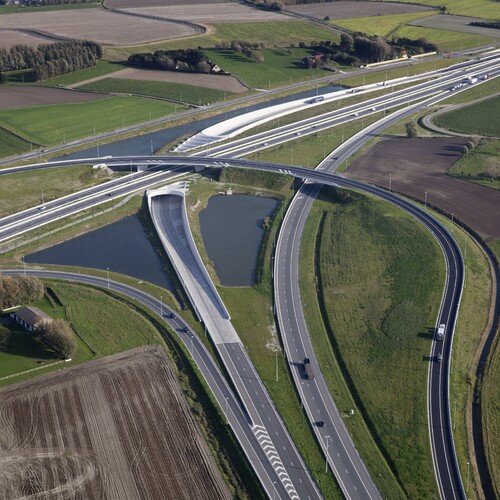
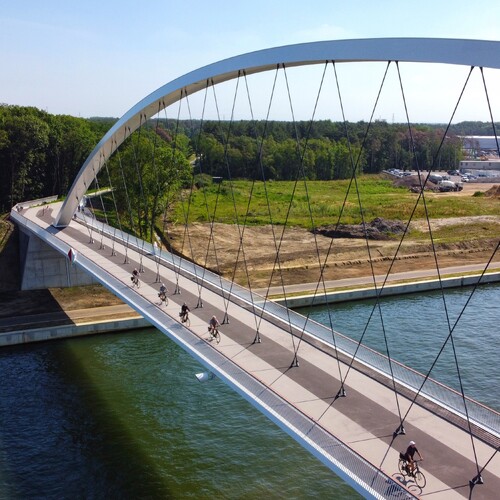
Bicycle bridge, Tessenderlo
A seamless blend of functionality and design
An additional bicycle bridge Cutting through the Flemish landscape near Beringen, just outside the city of Hasselt, the Albert Canal passes…
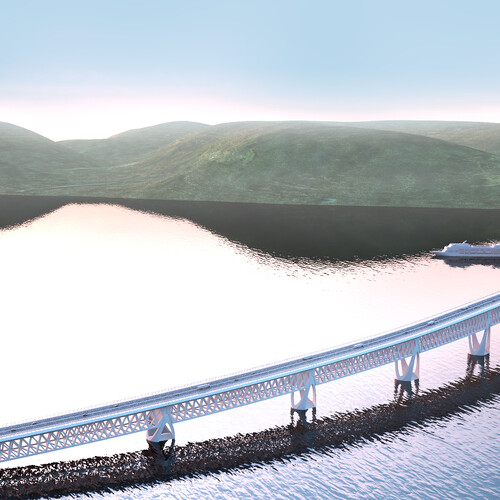
Sognefjord Buoyancy Bridge, Norway
Innovative floating bridge seamlessly integrates with dramatic landscape
Architectural studio ZJA, in collaboration with Iv-Consult and the Technical University Delft developed a design for a spectacular floating…

Road expansion A27/A1
Routing design
Not many people know such a thing even exists, but the motorway A27 (from Breda to Almere) has a routing design described by the Dutch Road…
